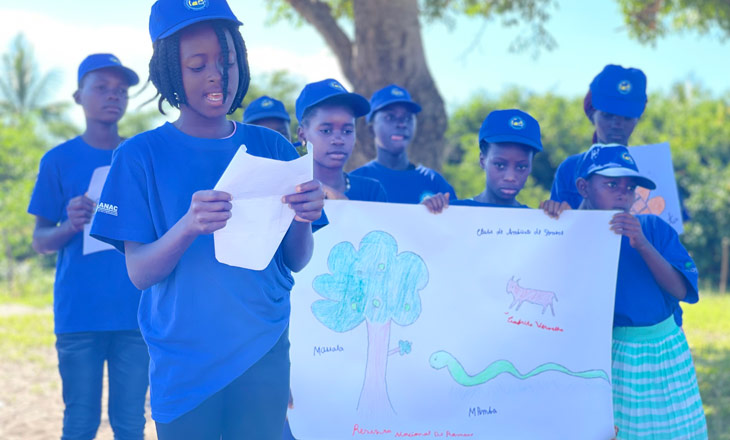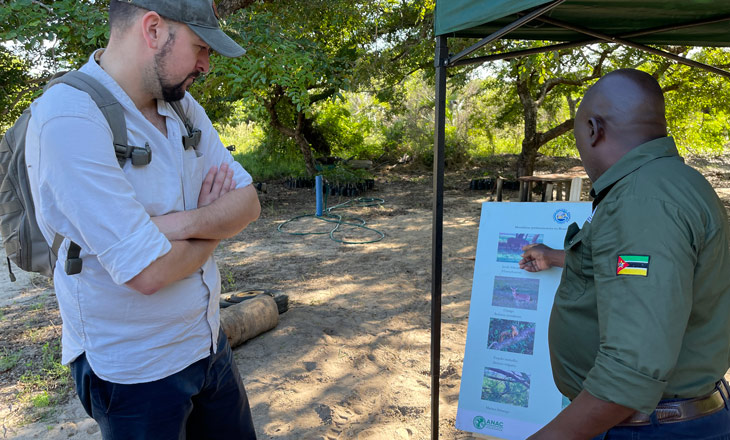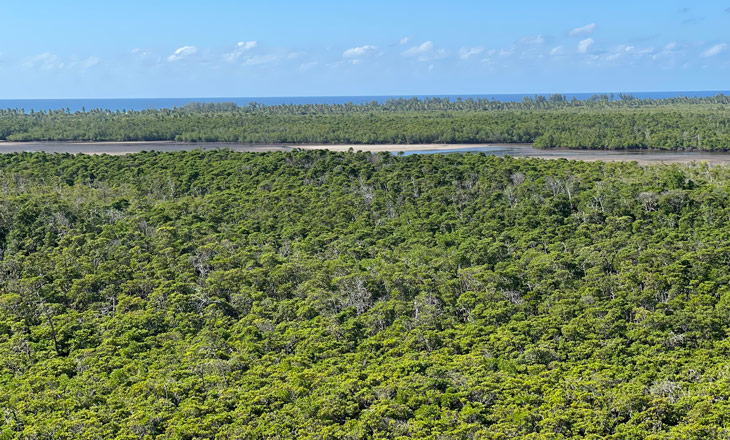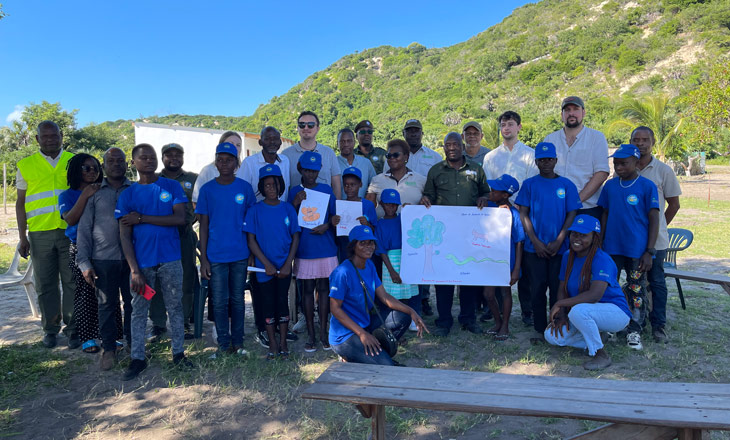The Foundation for Biodiversity Conservation (BIOFUND), the National Administration of Conservation Areas (ANAC) and representatives of the Swedish Embassy, in the context of the Biodiversity Conservation Program, carried out a monitoring visit of the ongoing activities in the Pomene National Reserve (RNP between 6 and 10 May 2024. The visit focused on the construction works of a warehouse and the rehabilitation of the residence of the Reserve Administrator, financed by the Swedish International Development Agency (SIDA-Sweden), after they were severely affected by Cyclone Freddy.
Published at 23/05/2024
Biodiversity Conservation Program assesses progress in Pomene National Reserve
During the visit, the Reserve Administrator presented the ongoing activities, highlighting the progress in community initiatives, advances in the ecology and conservation sector, as well as the challenges and future perspectives. The ongoing processes for the construction of both infrastructures were discussed. Possible synergies between projects funded by SIDA-Sweden were also explored, in areas such as renewable energy, with a focus on solar energy, participatory management of natural resources and management and tourism infrastructures, with a view to improving the management of the Reserve and boosting tourism.
With an area of 200km², the Pomene National Reserve located in the Massinga District, Inhambane Province, is characterised by a great diversity of flora and fauna species.
Three species of primates stand out, including the simango monkey, Cercopithecus mitis, whose species is protected by law in Mozambique, and the cycad Encephalartos ferox, which is in a state of vulnerability due to habitat loss, illegal collection and other human impacts. Along the Pomene Bay, there is an extensive mangrove forest, where the occurrence of species such as Avicennia marina (white mangrove); Ceriops tagal (siriúba mangrove); Bruguiera gymnorhiza (Indian mangrove); Sonneratia alba (wild mangrove) and Rhizophora mucronata (red mangrove) is notable, the latter being the most dominant species.







